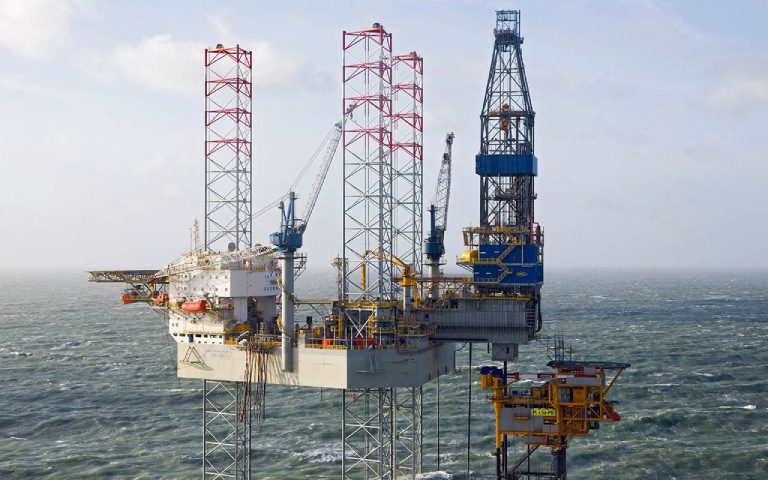Photo: Odfjell Drilling
By Mikael Holter (Bloomberg) — While other offshore rig operators are still struggling to survive the worst oil-market slump in a generation, one Norwegian company has managed to turn things around.
Odfjell Drilling Ltd., which owns four rigs and specializes in drilling in harsh environments, has seen its stock rise almost 300 percent in the last year to trade near a three-year high even as rivals such as Transocean Ltd. and Ensco Plc. continued to lose billions in market value.
“It’s completely unique,” said Sondre Stormyr, an analyst at Danske Bank A/S.
The drillers’ success boils down to two factors, according to Stormyr and fellow analyst Eirik Rohmesmo of Clarksons Platou Securities AS:
- Odfjell was able to refinance debt through a $525 million loan last year without having to sell new equity — a “big relief” for investors, according to Rohmesmo
- The company has had unparalleled success in securing work even as rivals have had to idle or even scrap rigs because they can’t find contracts
Odfjell’s success at winning contracts is in part thanks to its fleet of high-end harsh-environment units, a segment of the market that’s been shielded from the worst fallout. It’s also due to Odfjell’s willingness to accept lower rates.
When Odfjell got a three-year contract from Norway’s Statoil ASA in 2015 to drill production wells on the Johan Sverdrup field, the $300,000 day rate looked like a steal. After all, it was only about half the Deepsea Atlantic rig’s previous fee. Since then, comparable rates have gone below $200,000 in some cases, and the Sverdrup contract now looks “fantastic,” Rohmesmo said.
Odfjell has all four rigs on contracts that stretch as far as 2022, with an order backlog of $1.2 billion at the end of March.
“We said we would keep our rigs warm at any price,” Chief Executive Officer Simen Lieungh, said in a phone interview last week. “We got punished for that in the start, but we made a choice, because we were going to refinance some loans.”
Utilization for the most advanced harsh-environment rigs has stayed above 80 percent, while it’s plunged almost as low as 50 percent for the market as a whole, Stormyr said. That’s partly because the building boom in rigs over the past decade focused largely on deep-water drillships, which were ordered by the “bucket-load,” Lieungh said. Rates for harsh-environment rigs could get an earlier boost than for other floating units, starting in 2019, he added.
Takeover Target
Odfjell’s success isn’t going unnoticed. As industry consolidation gathers pace, with the value of deals more than doubling in the last year, according to Bloomberg calculations, Odfjell has been identified by analysts including Janne Kvernland of Nordea AB as a likely acquisition target. The shares have surged 19 percent since Transocean, the world’s biggest offshore driller by market value, announced it would buy rival Songa Offshore last week.
The company has been contacted by many suitors, including “the big ones” in the industry, both for its floating-rig business and its well-services unit, Lieungh said. None of these inquiries led to advanced talks for the moment, and he declined to name any companies.
“The day an opportunity comes that’s attractive enough, of course we’re able to do something,” Lieungh said. “But it has to be an attractive opportunity.”
One potential buyer is Diamond Offshore Drilling Inc., both analysts said. Ensco Plc and Transocean may also be interested, said Stormyr.
A representative of Diamond Offshore said the company wouldn’t comment on takeover speculation. Transocean and Ensco didn’t immediately respond to emails seeking comment.
Odfjell shares were up 0.9 percent at 23.7 kroner at 10 a.m. in Oslo trading on Thursday. The stock is still well below the 43.5 kroner peak it reached in 2013 and hasn’t fully recovered to its price before crude started falling in 2014.
Odfjell currently trades at a discount as the stock price fails to include the value of the company’s well-services unit, Lieungh said. While the company was willing to sell the business unit as a plan B during its refinancing, the CEO said he was happy that wasn’t necessary.
“There’s significant upside in the stock,” Lieungh said.
© 2017 Bloomberg L.P

 Join The Club
Join The Club











